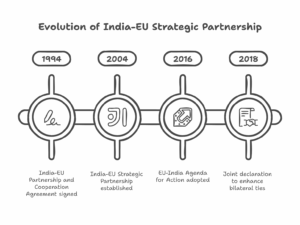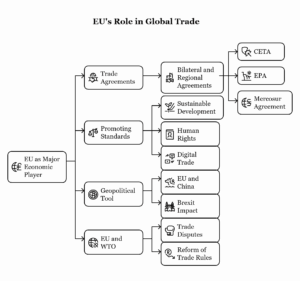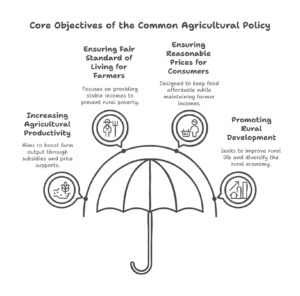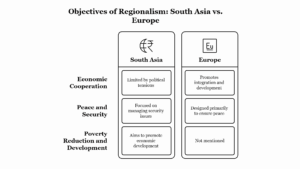Canadian public administration has undergone several significant reforms throughout its history, driven by changing political, economic, and social contexts. These reforms have sought to improve the efficiency, effectiveness, and responsiveness of public institutions, address the challenges of fiscal management, and modernize the delivery of government services. This examination will highlight the major efforts to reform Canadian public administration, discussing key reforms, their objectives, and their outcomes.
1. The Early Stages of Reform (Post-World War II Era):
After World War II, Canada faced several challenges related to post-war reconstruction, the expansion of the welfare state, and an increasing demand for public services. The Canadian public service was initially shaped by a centralized and hierarchical system, with a strong emphasis on patronage-based appointments and loyalty to the government of the day.
The Glassco Commission (1962) was one of the first major reform efforts aimed at modernizing the public administration system. The commission was tasked with reviewing the structure and operations of the federal public service to improve efficiency and address concerns about political patronage and bureaucratic inefficiency. The Glassco Commission’s recommendations led to:
- The establishment of merit-based recruitment and promotion practices, moving away from patronage appointments.
- The introduction of professional training for civil servants to enhance their skills and capabilities.
- A focus on reducing the centralization of decision-making and improving coordination between departments.
Although these reforms laid the groundwork for later developments, they did not fully address the broader issues of governance and efficiency within the public sector.
2. The Trudeau Era and the Focus on Bureaucratic Modernization (1960s–1970s):
During the leadership of Pierre Trudeau in the 1960s and 1970s, Canada saw an expansion of the federal government’s role in various social programs and services. The demands on public administration grew as the country worked to address issues like healthcare, education, and urban development.
In this period, the federal government initiated further reforms aimed at modernizing the bureaucracy and making it more responsive to the evolving needs of society. One of the most significant efforts was the Public Service Employment Act of 1969, which aimed to improve the public service’s independence, professionalism, and transparency by:
- Institutionalizing the merit-based recruitment process.
- Expanding the role of the Public Service Commission (PSC) to ensure fair and transparent hiring practices.
- Introducing policies to promote bilingualism and cultural diversity in the federal workforce, reflecting Canada’s multicultural reality.
The 1970s also saw a shift towards a more results-oriented approach, where performance and accountability were emphasized as key factors in the delivery of public services.
3. The Mulroney Era and the Need for Fiscal Reform (1980s–1990s):
The 1980s and 1990s marked a period of fiscal crisis for Canada, as the federal government faced rising public debt and deficits. The government under Prime Minister Brian Mulroney recognized the need to reform public administration to address these financial challenges while maintaining the integrity of public services.
One of the most prominent reform initiatives during this period was the Program Review launched in 1994. This was part of a broader effort to reduce the size of the public sector, curb government spending, and eliminate inefficiencies in government programs. The Program Review sought to:
- Reassess the role of government in various sectors and identify areas for potential cuts or privatization.
- Implement performance measurement and cost-effectiveness analysis to evaluate government programs.
- Introduce more flexible management practices, allowing for more autonomy in decision-making at the departmental level.
Additionally, there was a push for public sector downsizing, with significant reductions in the number of government employees, particularly in non-essential areas. This resulted in improved fiscal management but also led to concerns about reduced service levels and the strain on the remaining workforce.
4. The Chrétien-Martin Era and New Public Management (1990s–2000s):
Under the leadership of Jean Chrétien and later Paul Martin, Canada continued efforts to reform public administration, with a focus on New Public Management (NPM) principles. NPM was a global movement that sought to introduce business-like practices into the public sector to improve efficiency, accountability, and responsiveness.
Key reforms during this period included:
- Decentralization of decision-making to empower departmental managers and reduce bureaucratic red tape.
- Privatization and contracting out of government services to the private sector, especially in areas like utilities, transportation, and telecommunications. This was intended to enhance efficiency by introducing market competition into the public service.
- The introduction of performance-based budgeting, linking government spending to measurable outcomes and results.
- The creation of public-private partnerships (PPPs) to deliver infrastructure and public services more efficiently.
While these reforms helped improve fiscal discipline and efficiency, they also led to debates about the privatization of essential public services and the erosion of the public sector’s role in areas like healthcare and education.
5. The Harper Era and Accountability (2000s–2015):
Under Stephen Harper’s Conservative government, there was an emphasis on enhancing accountability and transparency in public administration. One of the key reforms during this period was the Federal Accountability Act (2006), which sought to address concerns about government transparency and integrity. The act included measures such as:
- Strengthening the role of the Office of the Auditor General in overseeing government spending and program performance.
- Introducing stricter rules for government contracting and lobbying.
- Expanding the powers of Access to Information laws to make government data more accessible to the public.
In addition, the government introduced a public sector compensation review to reduce expenditures and limit the growth of public sector salaries, aligning them with private sector standards.
6. Recent Reforms: Modernizing Public Administration for the 21st Century:
More recently, there have been efforts to further modernize Canadian public administration, focusing on improving digital services, transparency, and citizen engagement. These reforms have been driven by the need to adapt to the technological revolution and the changing expectations of Canadians.
- Digital Government Initiatives: The Canadian government has undertaken efforts to digitize services and improve the accessibility of government information through online platforms. This includes providing citizens with the ability to access services and interact with government agencies more easily.
- Public Service Renewal: The government has also focused on renewing the public service by encouraging diversity and inclusion, enhancing the skills and capabilities of the workforce, and fostering a culture of innovation and continuous improvement.
- Open Government: The current government has committed to making more government data and decision-making processes accessible to the public, promoting greater transparency and citizen involvement in governance.
Conclusion:
Reform efforts in Canadian public administration have been driven by a combination of fiscal pressures, political changes, and evolving public expectations. From the early initiatives in the 1960s to the recent digital and open government reforms, Canada’s public administration has evolved in response to internal and external challenges. While these reforms have led to improved efficiency, accountability, and transparency, they have also raised concerns about the erosion of public sector services, especially in areas that have been privatized or downsized. Ongoing efforts to modernize the public service and embrace innovation will continue to shape the future of Canadian governance.







Leave a Reply